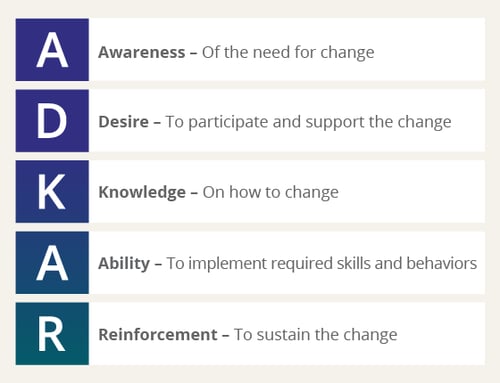Effective Change Management Begins With a Compelling Why

3 Mins
Updated: August 13, 2025
Published: August 30, 2023

Crafting a compelling why for your change is more important than ever. As a change practitioner, you know that clear and concise messages are essential for helping people through any change. But it takes a clear, concise message with a compelling why to inspire your people to act.
People Need to Understand Why
In change management, people are generally good at explaining the what of a project or initiative. These are the characteristics of the change, as well as the behaviors associated with performing and optimizing the change. Take remote work, for example. People generally understand what it means to work from home when you explain all that is involved and ways to do it effectively.
But is that why people were motivated to adopt the change to virtual working during the early days of the pandemic? Of course not. People were inspired to come together to adopt difficult changes that required sacrifice. The what—staying home—did not motivate people. The reason for the change—the health risk to loved ones—is what really brought the changes to life.
The same is true for any organizational change that depends on people adopting and using your new manufacturing process, DEI initiative, enterprise resource planning (ERP) system, etc.
How well do you focus on delivering a message of why? When you consider the changes going on in your organization now, is the why behind them strong? Does it bring your change to life? Does your why inspire people to action?
Change Management and
the Why Behind the Change
The Prosci ADKAR Model guides individuals through the process of change in phases: Awareness, Desire, Knowledge, Ability and Reinforcement. A compelling why helps people get through Awareness quickly and easily, and enables them to move on to Desire.

Create and Communicate
Your Why in Change Management
Building a compelling why for a change is a worthwhile effort that will lead your team to action. Using the model below along with our downloadable worksheet, you can work through each element in numerical order. Start with Logic, then move to Emotion, and so on. Be sure to build on each element, expanding on the content to arrive at your compelling why for change.
1. Logic – facts, figures, features and lists
Start by understanding the rational, data-driven, business case for your change. These are the objective reasons and empirical evidence that support the change. Although it is essential to understand the elements in this quadrant, logic does not inspire people to action because it comes from the head instead of the heart.
For example, the logic quadrant can come to life in terms ROI, invested capital, interest potential of money, solution success, and the time it will take to deliver the solution.
2. Emotion – Principles, values, beliefs and ego
The emotion quadrant represents the intuitive and subjective components of change, where the head meets the heart. This is the personal connection and it always comes first during a change. These are the answers to WIIFM or “What’s in it for me?” “How does this impact me?” “How do I feel about this change?” We can’t overlook how people feel about a change, so communicating openly and authentically is essential to creating a compelling why. It is simply human nature.
Connecting the logic behind your why to emotion might include the values that anchor and drive your business, issues around psychological safety, or building relationships.
3. Visual – Destination, steps, progress and benefits
Pictures and imagery help you clarify and simplify change. People think in pictures. Our brains are always converting information into a visual why. In pictures, we look for people places and things.
To convey your complex idea as a single image, try using visualization prompts. Where do you want to go? What are the steps you will take to get there? What does progress look like? What are the benefits?
4. Story – Imagination, context, action and result
The ultimate result of completing this exercise is a compelling story for your why, which you can then use to elevate your change management approach. Story is about synthesizing the essence of something in a narrative, along with characters and a plot. Brains are wired for story. We all enjoy hearing them, see ourselves as the characters, and relate with the plots. If someone gives you facts and figures, you may forget what they told you. But when they say, “Let me tell you a story,” your brain locks it away so you can draw on it again. Story resonates so much that people listen, link them to their own stories, and share them with others.

You can create a memorable story about why you or your organization must change. Building on the visual element you conceived above, think of your story in terms of, “Once upon a time … your change happened … and they lived happily ever after.”
Albert Einstein said, “If you can’t explain it simply, you don’t know it well enough.” With that in mind, be sure to keep shaping and editing your story until it is clear and concise, and no more than one page in length.
Effective Change Management
Communicating a compelling why connects the dots for everyone in your organization who will feel the impacts of a change. Whether you are rolling out a new manufacturing process, DEI initiative or ERP system, telling a clear, concise and inspiring story will move your change forward and help your people along the way.





